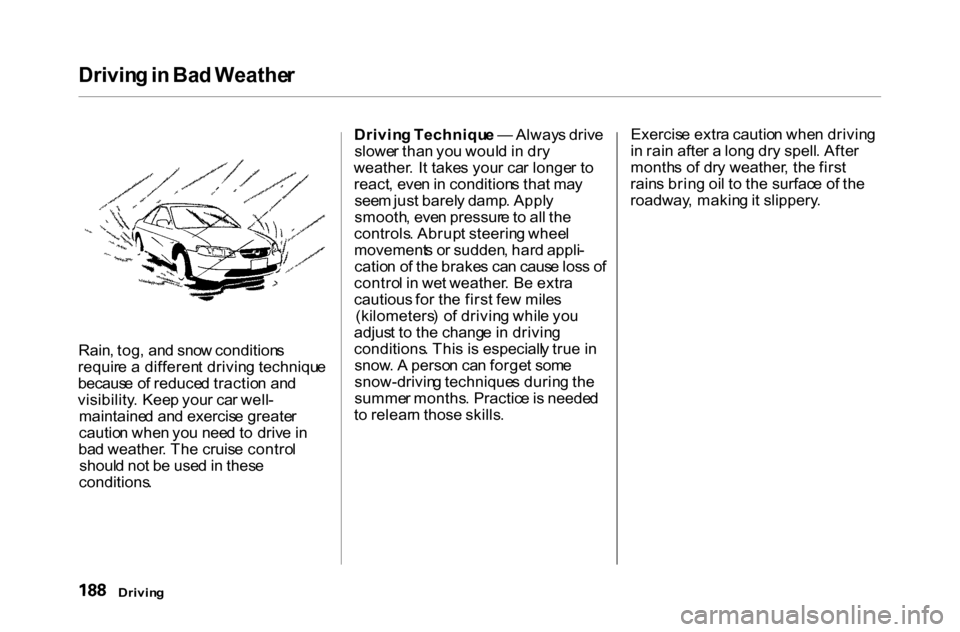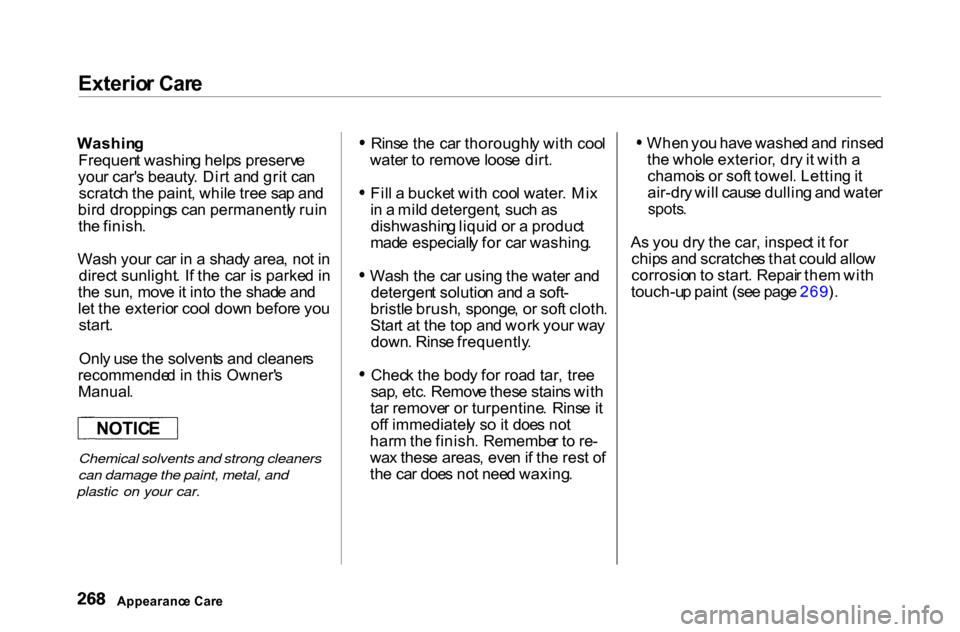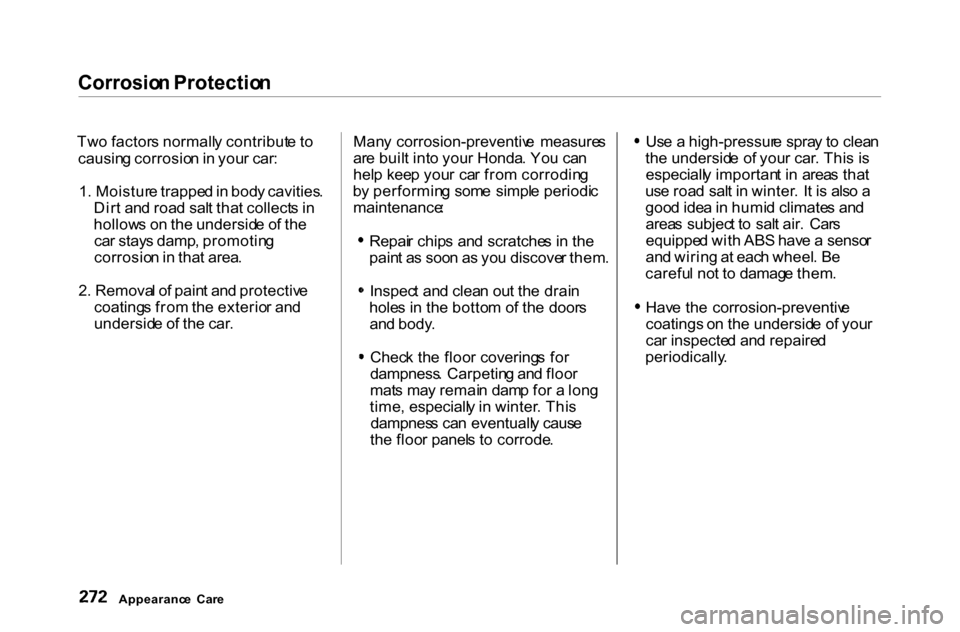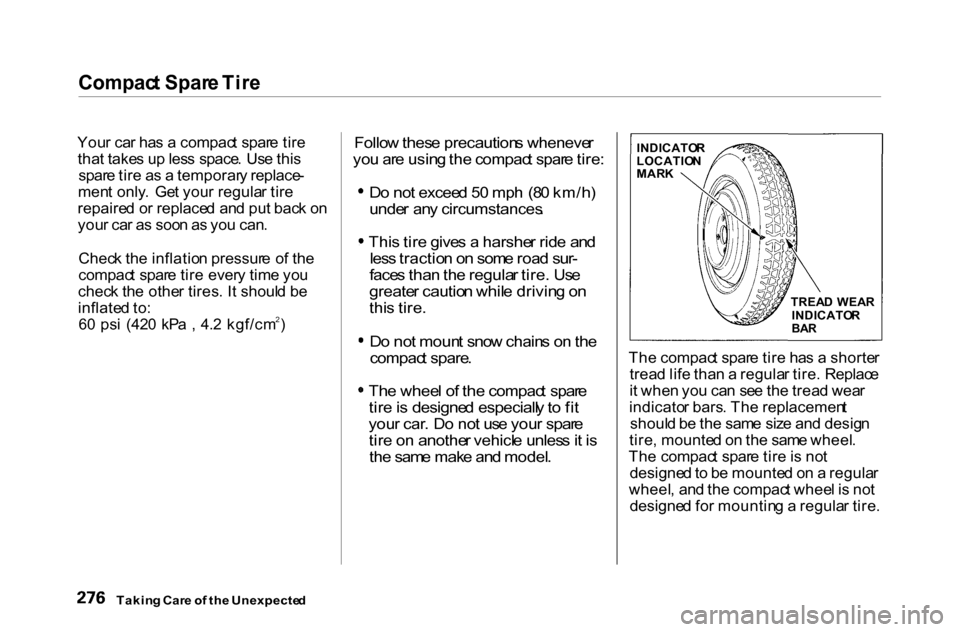2000 HONDA ACCORD COUPE ESP
[x] Cancel search: ESPPage 89 of 338

HomeLin
k Universa l Transmitte r
4 . Pres s an d releas e th e butto n o n
th e HomeLin k transmitter . (Th e
sam e butto n yo u traine d wit h
th e "Trainin g th e Transmitter "
procedure. )
5 . Pres s an d releas e th e
HomeLin k transmitte r butto n
again . Thi s shoul d tur n of f th e
trainin g ligh t o n th e garag e
doo r opene r unit . (Som e
system s ma y requir e yo u t o
pres s an d releas e th e butto n u p
t o thre e times. )
6 . Pres s th e transmitte r butto n
again . I t shoul d operat e th e
garag e door .
Retrainin g a Butto n
T o trai n a n alread y programme d
transmitte r butto n t o operat e a ne w
device :
1 . Selec t th e transmitte r butto n
yo u wan t t o train . 2
. Pres s an d hol d th e transmitte r
butto n unti l th e re d ligh t begin s
t o flas h slowl y (approximatel y
2 0 seconds) .
3 . Whil e continuin g t o hol d th e
transmitte r button , plac e th e
remot e contro l fo r th e devic e 1
t o 3 inche s fro m th e HomeLin k
transmitter .
4 . Pres s an d hol d th e butto n o n th e
remot e control . Hol d bot h
button s unti l th e re d ligh t
begin s t o flas h rapidly .
5. Releas e bot h buttons . Th e
transmitte r shoul d no w b e
traine d t o operat e th e device .
Erasin g Code s
T o eras e th e code s store d in al l
thre e buttons , pres s an d hol d th e
tw o outsid e button s unti l th e re d
ligh t begin s t o flash , the n releas e
th e buttons . Yo
u shoul d eras e al l thre e code s
befor e sellin g th e vehicle .
As required by the FCC: This device complies with Part 15
of the FCC rules. Operation is
subject to the following two
conditions: (1) This device may not
cause harmful interference, and (2) this device must accept any
interference received, includinginterference that may cause
undesired operation.
Changes or modifications not
expressly approved by the party responsible for compliance could
void the user's authority to operate
the equipment.
This device complies with Industry
Canada Standard RSS-210.
Operation is subject to the
following two conditions: (1) this device may not cause interference,and (2) this device must accept anyinterference that may cause
undesired operation of the device.
Instrument s an d Control s
Page 147 of 338

Audi
o Syste m
Radi o signals , especiall y o n th e F M
band , ar e deflecte d b y larg e object s
suc h a s building s an d hills . You r
radio then receive s bot h th e direc t
signa l fro m th e station' s transmitter ,
an d th e deflecte d signal . Thi s cause s
th e soun d to distor t o r flutter . Thi s is
a mai n caus e o f poo r radio receptio n
i n cit y driving . Radi
o receptio n ca n b e affecte d b y
atmospheri c condition s suc h a s
thunderstorms , hig h humidity , an d
eve n sunspots . Yo u ma y b e abl e to
receive a distan t radi o statio n on e
da y an d no t receive it th e nex t da y
becaus e of a chang e in conditions .
Electrica l interferenc e fro m passin g
vehicle s an d stationar y source s ca n
caus e temporar y receptio n problems .As required by the FCC:
Changes or modifications not expressly
approved by the party responsible for
compliance could void the user's
authority to operate the equipment.
Comfor t an d Convenienc e Feature s
Page 191 of 338

Drivin
g in Ba d Weathe r
Rain , tog , an d sno w condition s
requir e a differen t drivin g techniqu e
becaus e o f reduce d tractio n an d
visibility . Kee p you r ca r well -
maintaine d an d exercis e greate r
cautio n whe n yo u nee d t o driv e in
ba d weather . Th e cruis e contro l
shoul d no t b e use d in thes e
conditions . Drivin
g Techniqu e — Alway s driv e
slowe r tha n yo u woul d in dr y
weather . I t take s you r ca r longe r t o
react , eve n in condition s tha t ma y
see m jus t barel y damp . Appl y
smooth , eve n pressur e to al l th e
controls . Abrup t steerin g whee l
movement s o r sudden , har d appli -
catio n o f th e brake s ca n caus e los s o f
contro l i n we t weather . B e extr a
cautious for th e firs t fe w mile s
(kilometers ) o f drivin g whil e yo u
adjus t t o th e chang e in drivin g
conditions . Thi s i s especiall y tru e in
snow . A perso n ca n forge t som e
snow-drivin g technique s durin g th e
summe r months . Practic e is neede d
t o relear n those skills. Exercis
e extr a cautio n whe n drivin g
i n rai n afte r a lon g dr y spell . Afte r
month s o f dr y weather , th e firs t
rain s brin g oi l t o th e surfac e o f th e
roadway , makin g it slippery .
Drivin g
Page 271 of 338

Exterio
r Car e
Washin g
Frequen t washin g help s preserv e
you r car' s beauty . Dir t an d gri t ca n
scratc h th e paint , whil e tre e sa p an d
bir d dropping s ca n permanentl y rui n
th e finish .
Was h you r ca r i n a shad y area , no t i n
direc t sunlight . I f th e ca r i s parke d in
th e sun , mov e it int o th e shad e an d
le t th e exterio r coo l dow n befor e yo u
start .
Onl y us e th e solvent s an d cleaner s
recommende d in thi s Owner' s
Manual .
Chemical solvents and strong cleaners
can damage the paint, metal, and
plastic on your car.
Rins
e th e ca r thoroughl y wit h coo l
wate r t o remov e loos e dirt .
Fil l a bucke t wit h coo l water . Mi x
i n a mil d detergent , suc h a s
dishwashin g liqui d o r a produc t
mad e especiall y fo r ca r washing .
Was h th e ca r usin g th e wate r an d
detergen t solutio n an d a soft -
bristl e brush , sponge , o r sof t cloth .
Star t a t th e to p an d wor k you r wa y
down . Rins e frequently .
Chec k th e bod y fo r roa d tar , tre e
sap , etc . Remov e thes e stain s wit h
ta r remove r o r turpentine . Rins e it
of f immediatel y s o it doe s no t
har m th e finish . Remembe r t o re -
wa x thes e areas , eve n if th e res t o f
th e ca r doe s no t nee d waxing . Whe
n yo u hav e washe d an d rinse d
th e whol e exterior , dr y it wit h a
chamoi s o r sof t towel . Lettin g it
air-dr y wil l caus e dullin g an d wate r
spots .
A s yo u dr y th e car , inspec t i t fo r
chip s an d scratche s tha t coul d allo w
corrosio n to start . Repai r the m wit h
touch-u p pain t (se e pag e 269 ).
Appearanc e Car e
NOTIC
E
Page 275 of 338

Corrosio
n Protectio n
Tw o factor s normall y contribut e t o
causin g corrosio n in you r car :
1 . Moistur e trappe d in bod y cavities .
Dir t an d roa d sal t tha t collect s i n
hollow s o n th e undersid e o f th e
ca r stay s damp , promotin g
corrosio n in tha t area .
2 . Remova l o f pain t an d protectiv e
coating s fro m th e exterio r an d
undersid e o f th e car . Man
y corrosion-preventiv e measure s
ar e buil t int o you r Honda . Yo u ca n
hel p kee p you r ca r fro m corrodin g
b y performin g som e simpl e periodi c
maintenance :
Repai r chip s an d scratche s i n th e
pain t a s soo n a s yo u discove r them .
Inspec t an d clea n ou t th e drai n
hole s i n th e botto m o f th e door s
an d body .
Chec k th e floo r covering s fo r
dampness . Carpetin g an d floo r
mat s ma y remai n dam p fo r a lon g
time , especiall y i n winter . Thi s
dampnes s ca n eventuall y caus e
th e floo r panel s t o corrode . Us
e a high-pressur e spra y t o clea n
th e undersid e o f you r car . Thi s i s
especiall y importan t i n area s tha t
us e roa d sal t i n winter . I t i s als o a
goo d ide a in humi d climate s an d
area s subjec t t o sal t air . Car s
equippe d wit h AB S hav e a senso r
an d wirin g a t eac h wheel . B e
carefu l no t t o damag e them .
Hav e th e corrosion-preventiv e
coatings on th e undersid e o f you r
ca r inspecte d an d repaire d
periodically .
Appearanc e Car e
Page 279 of 338

Compac
t Spar e Tir e
You r ca r ha s a compac t spar e tir e
tha t take s u p les s space . Us e thi s
spar e tir e a s a temporar y replace -
men t only . Ge t you r regula r tir e
repaire d o r replace d an d pu t bac k o n
you r ca r a s soo n a s yo u can .
Chec k th e inflatio n pressur e o f th e
compac t spar e tir e ever y tim e yo u
chec k th e othe r tires . I t shoul d b e
inflate d to :
6 0 ps i (42 0 kP a , 4. 2 kgf/cm 2)
Follo
w thes e precaution s wheneve r
yo u ar e usin g the compac t spar e tire :
D o no t excee d 5 0 mp h (8 0 km/h )
unde r an y circumstances .
Thi s tir e give s a harshe r rid e an d
les s tractio n o n som e roa d sur -
face s tha n th e regula r tire . Us e
greate r cautio n whil e drivin g o n
thi s tire .
D o no t moun t sno w chain s o n th e
compac t spare .
Th e whee l o f the compac t spar e
tir e is designe d especiall y to fi t
you r car . D o no t us e you r spar e
tir e o n anothe r vehicl e unles s it i s
th e sam e mak e an d model .
Th
e compac t spar e tir e ha s a shorte r
trea d lif e tha n a regula r tire . Replac e
i t whe n yo u ca n se e th e trea d wea r
indicato r bars . Th e replacemen t
shoul d b e th e sam e siz e an d desig n
tire , mounte d o n th e sam e wheel .
Th e compac t spar e tir e is no t
designe d to b e mounte d o n a regula r
wheel , an d th e compac t whee l i s no t
designe d fo r mountin g a regula r tire .
Takin g Car e o f th e Unexpecte d
INDICATO
R
LOCATIO N
MAR K
TREAD WEA R
INDICATO R
BA R
Page 314 of 338

DO
T Tir e Qualit y Gradin g (U.S . Cars )
Temperatur e
Th e temperatur e grade s ar e A (th e
highest) , B , an d C , representin g th e
tire' s resistanc e to th e generatio n o f
hea t an d it s abilit y t o dissipat e hea t
whe n teste d unde r controlle d
condition s o n a specifie d indoo r
laborator y tes t wheel . Sustaine d hig h
temperatur e ca n caus e th e materia l
o f th e tir e to degenerat e an d reduc e
tir e life , an d excessiv e temperatur e
ca n lea d to sudden tire failure . Th e
grad e C correspond s t o a leve l o f
performanc e whic h al l passenge r ca r
tire s mus t mee t unde r th e Federa l
Moto r Vehicl e Safet y Standar d No .
109 . Grade s B an d A represen t
highe r level s o f performanc e o n th e
laborator y tes t whee l tha n th e
minimu m require d b y law .
Warning
: Th e temperatur e grad e fo r
thi s tir e is establishe d fo r a tir e tha t
i s properl y inflate d an d no t over -
loaded . Excessiv e speed , underinfla -
tion , o r excessiv e loadin g eithe r
separatel y o r i n combination , ca n
caus e hea t build-u p an d possibl e tir e
failure .
Technical Informatio n